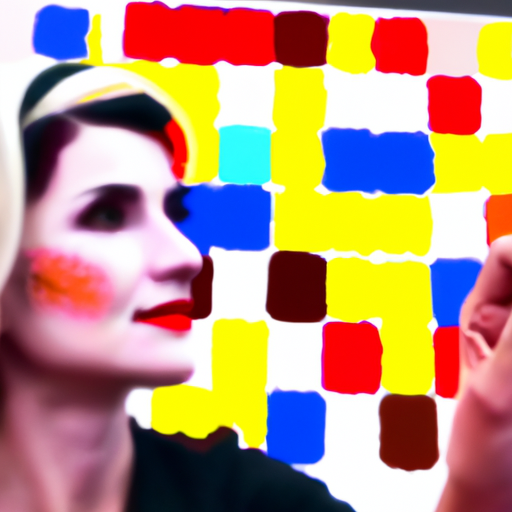
-
Table of Contents
- Art Therapy and Illustration for Mental Health
- The Power of Art Therapy
- Illustration as a Therapeutic Tool
- Case Studies and Examples
- Case Study 1: Art Therapy for Children with Autism
- Case Study 2: Illustration for Trauma Survivors
- Example 1: The “Draw Your Feelings” Technique
- Example 2: The Power of Mandalas
- The Role of Art Therapy and Illustration in Overall Well-being
- Summary
Art Therapy and Illustration for Mental Health

Art therapy and illustration have emerged as powerful tools in the field of mental health. These creative practices provide individuals with a means of self-expression, emotional release, and personal growth. Through the use of various art mediums and techniques, individuals can explore their thoughts, feelings, and experiences in a non-verbal and non-threatening way. This article explores the benefits of art therapy and illustration for mental health, examines case studies and examples, and highlights the role of these practices in promoting overall well-being.
The Power of Art Therapy
Art therapy is a form of psychotherapy that utilizes the creative process of making art to improve mental, emotional, and physical well-being. It is based on the belief that the act of creating art can be therapeutic and healing. Art therapists work with individuals of all ages and backgrounds, using various art materials and techniques to facilitate self-expression and promote self-discovery.
One of the key benefits of art therapy is its ability to provide a safe and non-judgmental space for individuals to explore their emotions and experiences. Many people find it difficult to express their thoughts and feelings verbally, especially when dealing with trauma or deeply rooted issues. Art therapy offers an alternative form of communication, allowing individuals to express themselves visually and symbolically.
Research has shown that art therapy can be effective in treating a wide range of mental health conditions, including depression, anxiety, post-traumatic stress disorder (PTSD), and eating disorders. A study published in the Journal of the American Art Therapy Association found that art therapy significantly reduced symptoms of depression and anxiety in adults with mental health disorders.
Illustration as a Therapeutic Tool
Illustration, on the other hand, focuses on the creation of visual representations that convey a message or tell a story. It is often used in conjunction with art therapy to enhance the therapeutic process. Illustration allows individuals to externalize their thoughts and emotions, making them more tangible and easier to understand.
Illustration can be particularly beneficial for individuals who struggle with verbal communication or have difficulty expressing themselves through traditional art forms. By creating visual narratives or using symbols and metaphors, individuals can communicate complex emotions and experiences that may be difficult to put into words.
One example of the therapeutic power of illustration is the use of visual journals. Visual journals are personal, visual diaries that combine writing and drawing. They provide individuals with a creative outlet to explore their thoughts and feelings, document their experiences, and track their progress over time. Visual journals can be especially helpful for individuals with anxiety or trauma-related disorders, as they offer a safe space to process and reflect on their emotions.
Case Studies and Examples
Several case studies and examples highlight the effectiveness of art therapy and illustration in promoting mental health:
Case Study 1: Art Therapy for Children with Autism
A study conducted by the University of Utah’s College of Social Work examined the impact of art therapy on children with autism spectrum disorder (ASD). The researchers found that art therapy helped improve the children’s social skills, emotional regulation, and self-esteem. Through the use of art materials and creative activities, the children were able to express themselves and connect with others in a meaningful way.
Case Study 2: Illustration for Trauma Survivors
In a case study published in the Journal of Trauma & Dissociation, a trauma survivor used illustration as a therapeutic tool to process her traumatic experiences. Through the creation of visual narratives, she was able to externalize her emotions and gain a deeper understanding of her trauma. The process of illustrating her experiences also helped her regain a sense of control and empowerment.
Example 1: The “Draw Your Feelings” Technique
The “Draw Your Feelings” technique is a commonly used art therapy intervention. It involves asking individuals to create a visual representation of their emotions using colors, shapes, and symbols. This technique allows individuals to externalize and explore their feelings, making them more manageable and less overwhelming.
Example 2: The Power of Mandalas
Mandalas, circular geometric patterns, have been used for centuries as a tool for meditation and self-reflection. Creating and coloring mandalas can be a calming and centering activity, promoting relaxation and mindfulness. Many individuals find the process of coloring mandalas to be therapeutic, as it allows them to focus their attention and quiet their minds.
The Role of Art Therapy and Illustration in Overall Well-being
Art therapy and illustration play a crucial role in promoting overall well-being. These practices offer individuals a creative outlet for self-expression, emotional release, and personal growth. By engaging in art therapy and illustration, individuals can:
- Develop self-awareness and self-acceptance
- Process and cope with difficult emotions
- Improve communication and interpersonal skills
- Enhance problem-solving and decision-making abilities
- Reduce stress and anxiety
- Promote relaxation and mindfulness
- Build resilience and improve self-esteem
Furthermore, art therapy and illustration can be integrated into various treatment approaches, such as cognitive-behavioral therapy (CBT) and mindfulness-based therapy. They can also be used in group settings, allowing individuals to connect with others and build a sense of community.
Summary
Art therapy and illustration have proven to be powerful tools in promoting mental health and well-being. These creative practices provide individuals with a safe and non-judgmental space to explore their thoughts, feelings, and experiences. Through the use of various art mediums and techniques, individuals can express themselves visually and symbolically, facilitating self-discovery and personal growth. Art therapy and illustration have been shown to be effective in treating a wide range of mental health conditions, including depression, anxiety, and trauma-related disorders. By incorporating art therapy and illustration into treatment approaches, individuals can develop self-awareness, cope with difficult emotions, improve communication skills, and enhance overall well-being.
